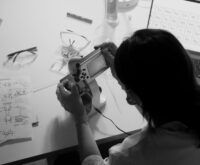Creativity and Its Role in Academic Excellence
We often think of academics as a world of rigid structures, rote memorization, and strict adherence to rules. But what if I told you that one of the most potent tools for academic success lies within the realm of imagination and innovation? Creativity, often perceived as the antithesis of structured learning, is actually a crucial ingredient in achieving academic excellence. It’s the spark that ignites true understanding, fuels problem-solving, and ultimately, unlocks a student’s full potential.

Why is Creativity Important in Academics?
Creativity isn’t just about artistic expression; it’s about thinking differently, approaching challenges from unique angles, and finding novel solutions. In the academic landscape, this translates to:
Enhanced Learning and Retention
When we engage our creative minds, we move beyond passive absorption of information and actively construct our understanding. Think about it: creating a mind map, designing a presentation, or even writing a song about a historical event requires a deeper level of engagement than simply reading a textbook. This active participation leads to better retention and a more profound grasp of the subject matter.
Improved Problem-Solving Skills
Academic success often hinges on the ability to solve complex problems. Creativity equips students with the mental agility to think outside the box, consider multiple perspectives, and devise innovative solutions. It encourages experimentation and the willingness to embrace failure as a stepping stone to success. This resilience is invaluable, not just in academics, but in life.
Increased Motivation and Engagement
Let’s be honest, traditional learning methods can sometimes feel dry and uninspiring. Injecting creativity into the learning process can reignite that spark of curiosity and make learning enjoyable. Whether it’s through project-based learning, collaborative brainstorming sessions, or incorporating artistic elements into assignments, creativity fosters a more engaging and motivating learning environment.
Practical Ways to Cultivate Creativity in Academia
So, how can we practically integrate creativity into the academic sphere? Here are a few ideas:
- Encourage open-ended assignments: Instead of always prescribing a rigid format, allow students to explore different ways of demonstrating their understanding, such as through presentations, videos, or even creative writing pieces.
- Promote brainstorming and collaboration: Group projects and brainstorming sessions can foster a dynamic exchange of ideas and encourage students to think creatively together.
- Incorporate arts and multimedia: Encourage students to use visual aids, music, or other artistic mediums to express their learning. This can cater to different learning styles and make the learning experience more engaging.
- Embrace technology: Leverage digital tools and platforms to facilitate creative expression. There are numerous apps and software programs that can empower students to create videos, animations, and interactive presentations.
- Cultivate a growth mindset: Encourage students to embrace challenges, view mistakes as learning opportunities, and persevere in the face of setbacks. A growth mindset is essential for fostering creativity.
Examples of Creativity in Action
Imagine a history student creating a graphic novel to depict a historical event, or a science student designing a 3D model of a molecule. A math student might compose a song to explain a complex theorem, while a literature student could create a dramatic performance based on a classic novel. These examples highlight the diverse ways in which creativity can enhance learning and demonstrate understanding.
The Future of Learning: Embracing the Creative Spark
In today’s rapidly evolving world, creativity is no longer a luxury; it’s a necessity. As we prepare students for the future, we must equip them with the creative thinking skills they need to navigate complex challenges, innovate, and thrive. By embracing creativity as an integral part of the academic journey, we can unlock the full potential of every student and empower them to achieve true academic excellence.
The integration of creativity into education is not about diluting academic rigor, but about enriching it. It’s about fostering a love of learning, empowering students to become active participants in their education, and preparing them to be innovative thinkers and problem-solvers in a world that demands both knowledge and imagination.



 Group Project Survival Guide: Ace Your Next Collaboration
Group Project Survival Guide: Ace Your Next Collaboration  Conquer Essay Writer’s Block: Proven Strategies & Tips
Conquer Essay Writer’s Block: Proven Strategies & Tips  Supercharge Your Studies: The Ultimate Student Productivity App Guide
Supercharge Your Studies: The Ultimate Student Productivity App Guide  Find Your Dream Career: The Ultimate Student Guide
Find Your Dream Career: The Ultimate Student Guide  Network Like a Pro: Build Connections From Day One
Network Like a Pro: Build Connections From Day One  Nail That Interview: The Undeniable Power of a Killer Cover Letter
Nail That Interview: The Undeniable Power of a Killer Cover Letter  How to Set Up a Node: The Ultimate Guide
How to Set Up a Node: The Ultimate Guide  Crypto Arbitrage Trading: A Beginner’s Guide (2024)
Crypto Arbitrage Trading: A Beginner’s Guide (2024)  The Business of NFTs: How Top Brands Are Using Them
The Business of NFTs: How Top Brands Are Using Them  What Are ZK-Proofs? A Guide to Blockchain Privacy
What Are ZK-Proofs? A Guide to Blockchain Privacy  DeFi’s Hurdles: Security, Scalability & Regulation
DeFi’s Hurdles: Security, Scalability & Regulation  How to Read a Crypto Whitepaper: A Beginner’s Guide
How to Read a Crypto Whitepaper: A Beginner’s Guide